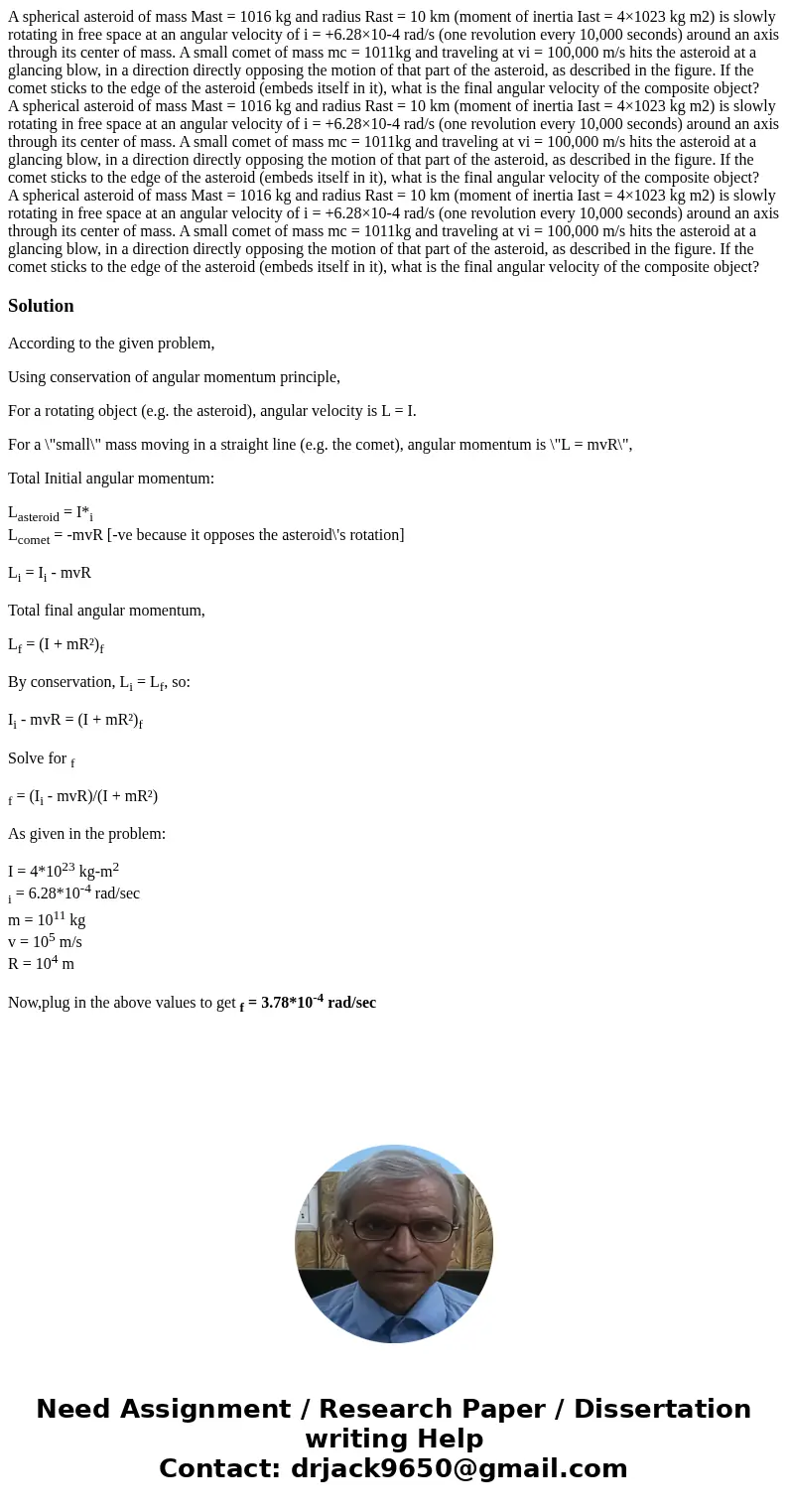A spherical asteroid of mass Mast 1016 kg and radius Rast
A spherical asteroid of mass Mast = 1016 kg and radius Rast = 10 km (moment of inertia Iast = 4×1023 kg m2) is slowly rotating in free space at an angular velocity of i = +6.28×10-4 rad/s (one revolution every 10,000 seconds) around an axis through its center of mass. A small comet of mass mc = 1011kg and traveling at vi = 100,000 m/s hits the asteroid at a glancing blow, in a direction directly opposing the motion of that part of the asteroid, as described in the figure. If the comet sticks to the edge of the asteroid (embeds itself in it), what is the final angular velocity of the composite object?
A spherical asteroid of mass Mast = 1016 kg and radius Rast = 10 km (moment of inertia Iast = 4×1023 kg m2) is slowly rotating in free space at an angular velocity of i = +6.28×10-4 rad/s (one revolution every 10,000 seconds) around an axis through its center of mass. A small comet of mass mc = 1011kg and traveling at vi = 100,000 m/s hits the asteroid at a glancing blow, in a direction directly opposing the motion of that part of the asteroid, as described in the figure. If the comet sticks to the edge of the asteroid (embeds itself in it), what is the final angular velocity of the composite object?
A spherical asteroid of mass Mast = 1016 kg and radius Rast = 10 km (moment of inertia Iast = 4×1023 kg m2) is slowly rotating in free space at an angular velocity of i = +6.28×10-4 rad/s (one revolution every 10,000 seconds) around an axis through its center of mass. A small comet of mass mc = 1011kg and traveling at vi = 100,000 m/s hits the asteroid at a glancing blow, in a direction directly opposing the motion of that part of the asteroid, as described in the figure. If the comet sticks to the edge of the asteroid (embeds itself in it), what is the final angular velocity of the composite object?
Solution
According to the given problem,
Using conservation of angular momentum principle,
For a rotating object (e.g. the asteroid), angular velocity is L = I.
For a \"small\" mass moving in a straight line (e.g. the comet), angular momentum is \"L = mvR\",
Total Initial angular momentum:
Lasteroid = I*i
Lcomet = -mvR [-ve because it opposes the asteroid\'s rotation]
Li = Ii - mvR
Total final angular momentum,
Lf = (I + mR²)f
By conservation, Li = Lf, so:
Ii - mvR = (I + mR²)f
Solve for f
f = (Ii - mvR)/(I + mR²)
As given in the problem:
I = 4*1023 kg-m2
i = 6.28*10-4 rad/sec
m = 1011 kg
v = 105 m/s
R = 104 m
Now,plug in the above values to get f = 3.78*10-4 rad/sec

 Homework Sourse
Homework Sourse